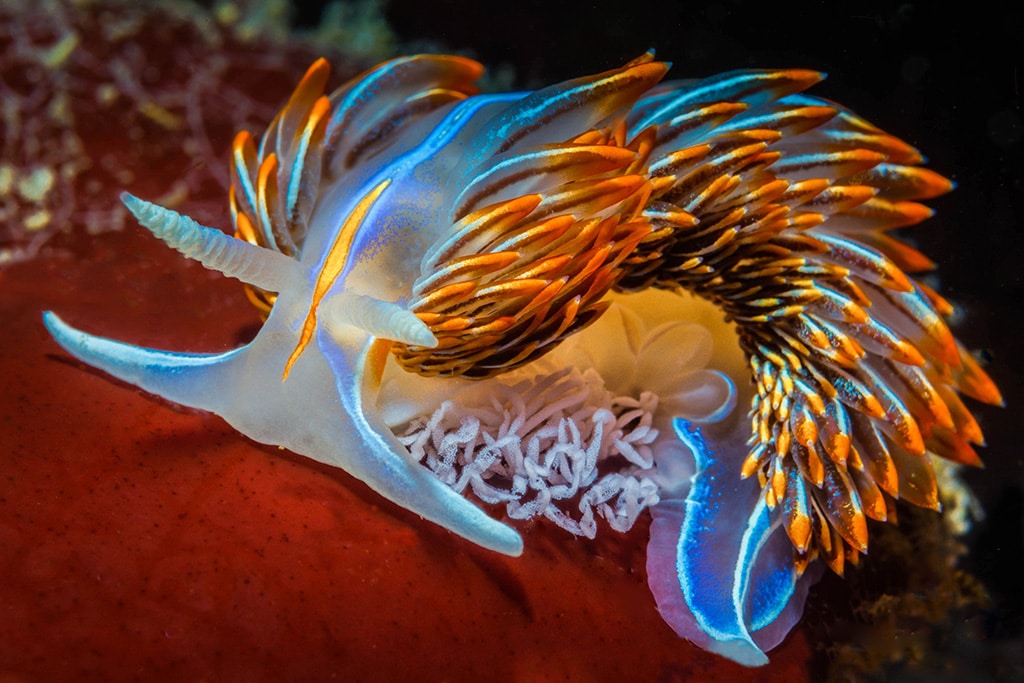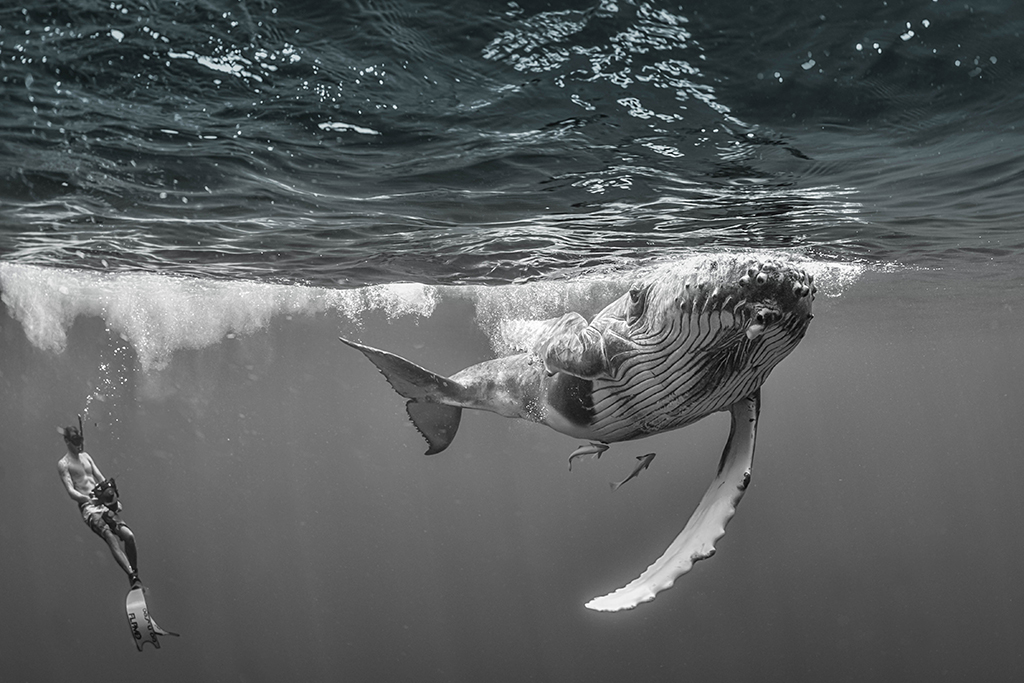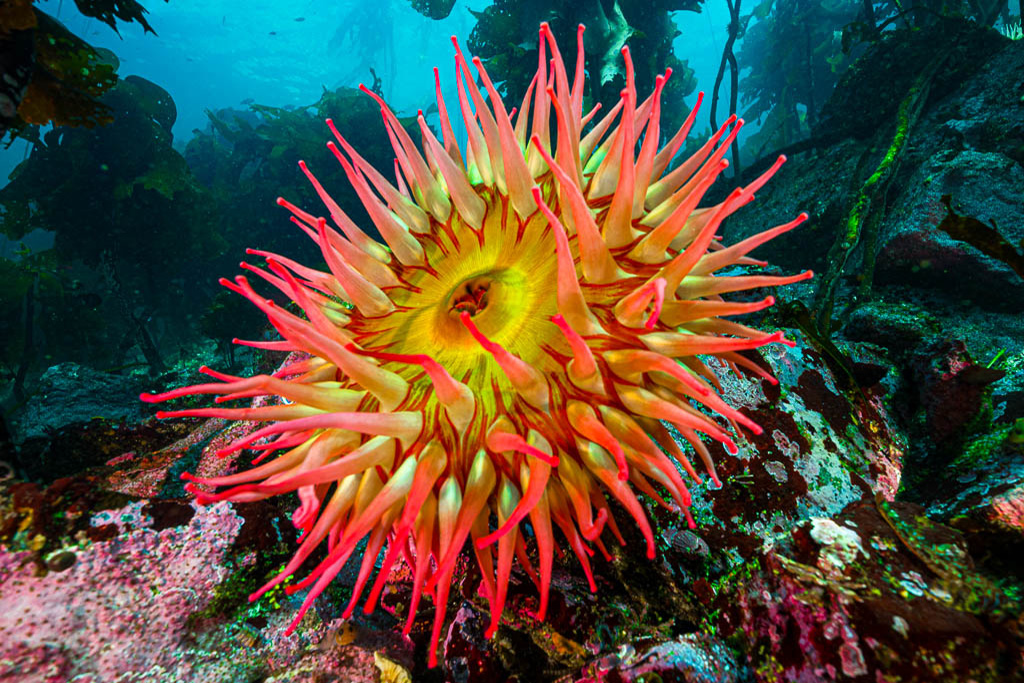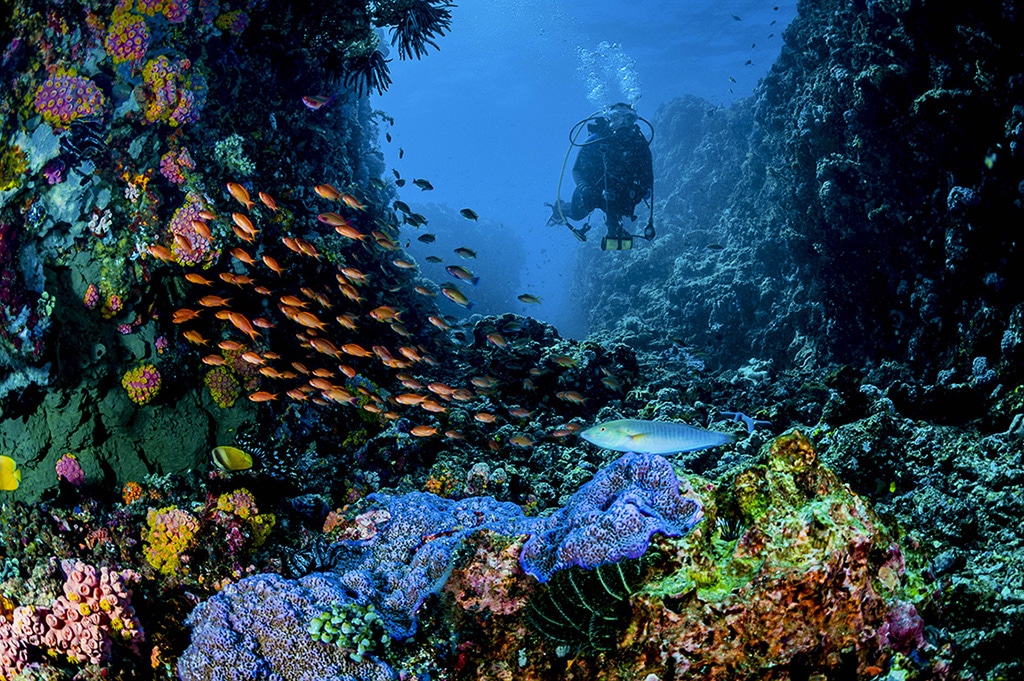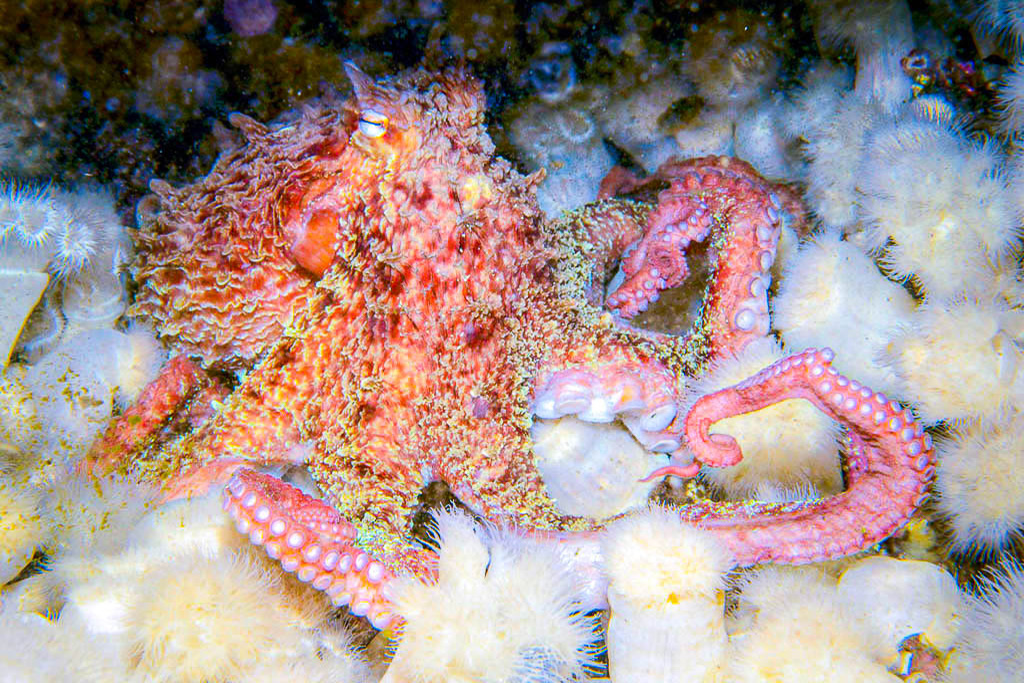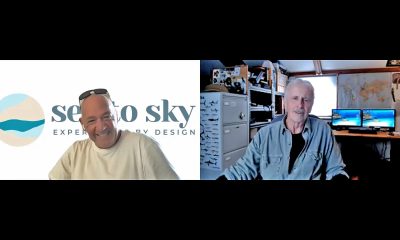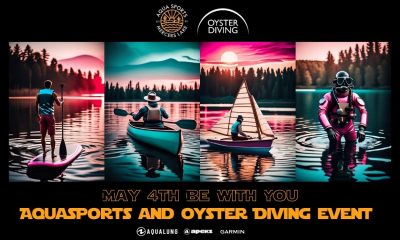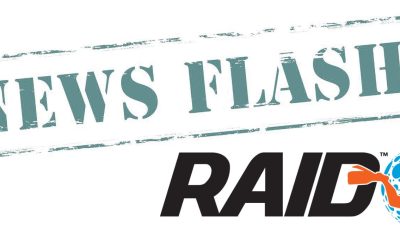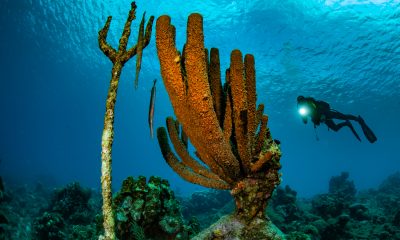News
Scubaverse Underwater Photographer Interview: Jett Britnell
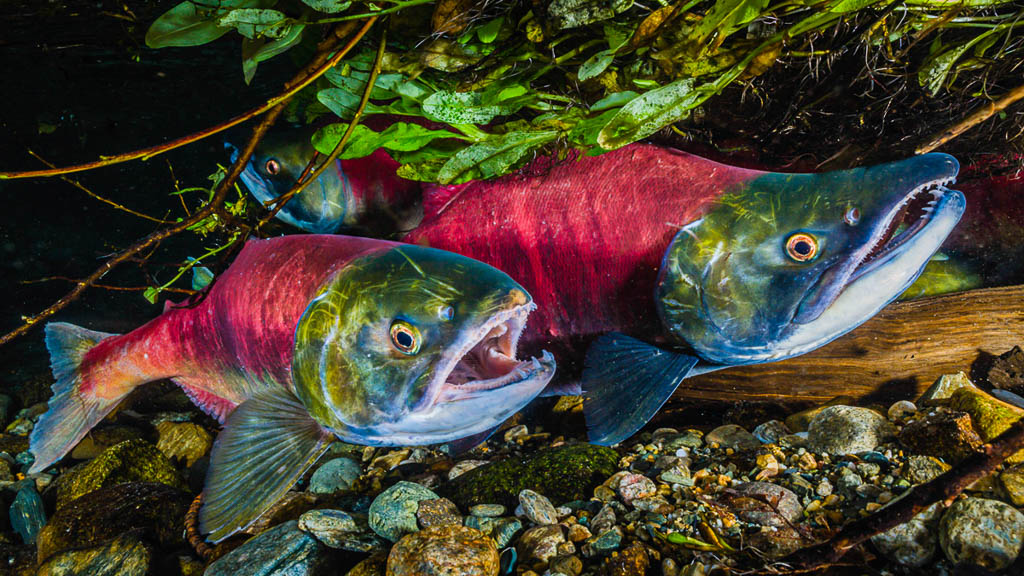
In an ongoing series, Scubaverse’s Underwater Photography Editor Nick Robertson-Brown talks to underwater photographers from around the world that he admires. In this blog: Jett Britnell
NRB: Tell us a little about yourself
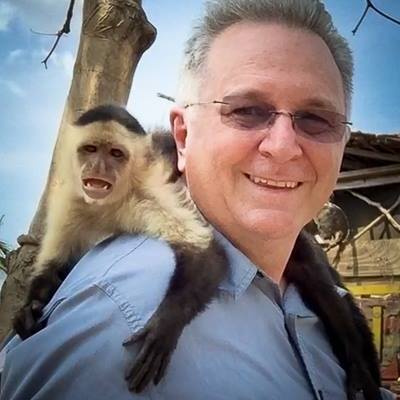 JB: I was five years old when I happened to watch an early 60s TV episode of a scuba diving adventure show called, Sea Hunt. I felt so inspired that I grabbed a war surplus gas mask that I had begged my dad to buy me at the local county fair, and ventured out into my backyard. Our backyard had a large iron cauldron that was filled with water and orange goldfish as a lawn feature. My gas mask had goggles and a long hose attached to a canister. Surely, it would work underwater. After putting on the gas mask I heaved myself up on the lip of the cauldron and dunked my head underwater. Not only could I clearly see the goldfish swimming, but I also noticed the flakes of rust lining the bottom of the caldron. Soon enough, water began seeping into the mask. “No worries”, I thought, “I have a breathing hose!” Of course, the gas mask flooded with water and I had to quickly abort my underwater mission. Clearly, something was calling to me as all through my childhood I was hypnotically drawn to scuba diving either through watching TV documentaries such as The Undersea World of Jacques Cousteau or thumbing through the pages of National Geographic to follow the shark diving exploits of Australia’s famous shark divers, Ron and Valerie Taylor.
JB: I was five years old when I happened to watch an early 60s TV episode of a scuba diving adventure show called, Sea Hunt. I felt so inspired that I grabbed a war surplus gas mask that I had begged my dad to buy me at the local county fair, and ventured out into my backyard. Our backyard had a large iron cauldron that was filled with water and orange goldfish as a lawn feature. My gas mask had goggles and a long hose attached to a canister. Surely, it would work underwater. After putting on the gas mask I heaved myself up on the lip of the cauldron and dunked my head underwater. Not only could I clearly see the goldfish swimming, but I also noticed the flakes of rust lining the bottom of the caldron. Soon enough, water began seeping into the mask. “No worries”, I thought, “I have a breathing hose!” Of course, the gas mask flooded with water and I had to quickly abort my underwater mission. Clearly, something was calling to me as all through my childhood I was hypnotically drawn to scuba diving either through watching TV documentaries such as The Undersea World of Jacques Cousteau or thumbing through the pages of National Geographic to follow the shark diving exploits of Australia’s famous shark divers, Ron and Valerie Taylor.
As a professional scuba diving photojournalist based in Vancouver, Canada, I have achieved what is known in explorer circles as being the “Holy Trifecta!” as I’m a Fellow in three of the world’s most prestigious explorer societies, The Explorers Club (New York), the Royal Canadian Geographical Society (Ottawa) and the Royal Geographical Society (London). I’m also a member of the Ocean Artists Society, an Ambassador in EXPLOCEAN’s League of Underwater Explorers, and a consultant to Elephanatics, an elephant advocacy organization based in Vancouver, British Columbia, Canada.
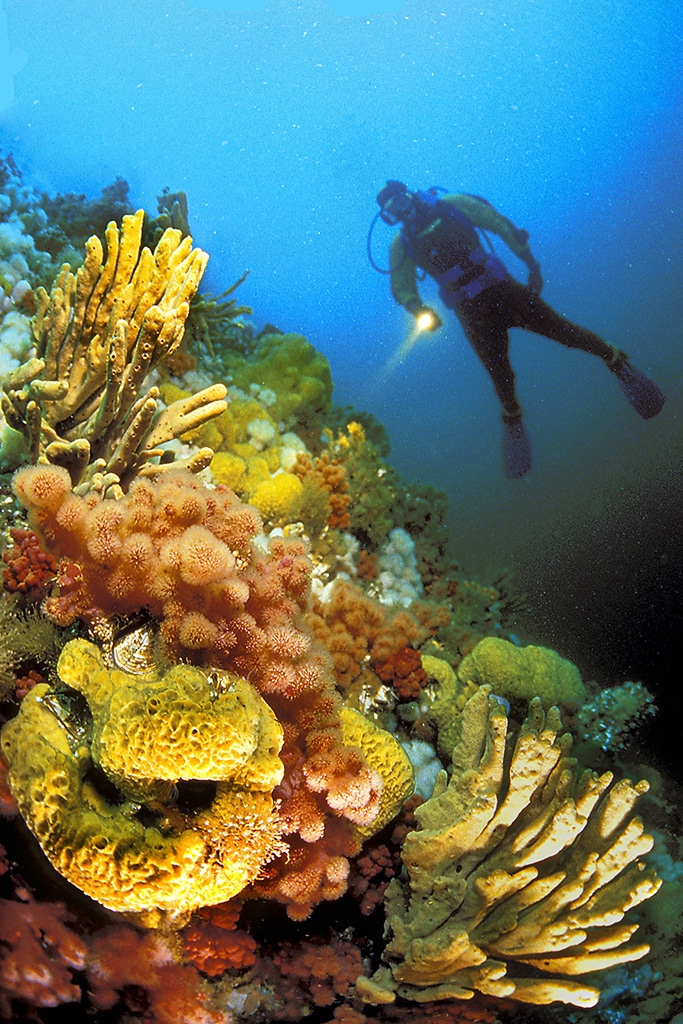
Descent into Browning Passage – British Columbia – at a dive site called Seven Tree Island – Jett Britnell
The first story I ever wrote was on speculation for Canada’s DIVER Magazine which meant if my writing and photography were not up to snuff, they did not have to publish it. Remarkably, for someone without a writing degree, or any formal photography training, my first published story in August 1987 was a four-page centre spread feature article along with one of my photos gracing the magazine’s front cover. I had arrived, so to speak. Since then, I have amassed almost 60 magazine cover shots, and my images and editorial continue to be published internationally in various media. Apart from freelancing with various scuba publications through the years, I was also a Travel Editor for Dive News Network, and a Contributing Editor to Canada’s Diver Magazine for 12 years. In 2016, I was named one of “122 Inspiring Shooters You Should Know” by Scuba Diver Ocean Planet Magazine. My wife, Kathryn, and I also co-author an exploration, photography and travel column for Luxe Beat Magazine under the banner “Third Age Expeditions,” https://luxebeatmag.com/category/columns/third-age-expeditions
NRB: How did your underwater photography start?
JB: My pursuit of underwater photography arose back in the early 80’s when I saw a couple of magazine cover shots in Canada’s DIVER Magazine by local British Columbia underwater photographer Gordy Cox. He remains as being one of the most talented underwater photographers I have ever known. I started shooting with slide film and actually learned how to adjust camera f-stops and shutter speeds 60-feet beneath the sea. While my undersea images were good, and getting better, to get them published in a magazine, I had to write the story to go along with my photos. Writing for magazines I also learned as I went along.
I made my first underwater pictures in January 1983 using a Canon AE-1 35mm SLR camera in a Tussey underwater housing. Those early images would not see the light of day today. Around this time, I had met Gordy Cox and we became friends. From the beginning Gordy always told me that I had “a good eye” and not to worry as the lighting will come. I also consider myself fortunate that I also become friends with a couple other talented BC underwater photographers, Neil McDaniel and David Fleetham. Somewhere along the way I was simply accepted as being one of their peers. Sadly, my friend and mentor, Gordy Cox, passed away in 2020.
NRB: What is your favourite u/w camera equipment (past & present) & why?
JB: While I have tried other camera brands underwater, I have largely been Team Nikon since I was first published. Prior to digital photography, I started out shooting slide film and my favorite camera was a Nikon F3 with a sport viewfinder in an underwater housing. I had two of these cameras housed in Aquatica housings, one set up for macro and the other for wide angle. I switched to digital photography in May 2004 with a Nikon D70 which was a great little 6MP DSLR and have not exposed one roll of film since. Presently, I’ve transitioned from a Nikon D800 to using Nikon Z6 and Z7 mirrorless cameras housed in an Aquatica AZ6/7 underwater housing, with twin Sea & Sea YS-D3 strobes. While I own a variety of prime Nikon lenses, the workhorse lenses for my underwater work are the AF Fisheye-NIKKOR 16mm f/2.8 for wide-angle work and the AF Micro-NIKKOR 60mm f/2.8 and Micro-NIKKOR 105mm f/2.8 lenses for shooting fish and macro critters. These three lenses pretty much cover it all underwater. I have also started using a Nikkor Z 14-24mm f/2.8 which I am quite enjoying.
NRB: What would be your advice to anyone new to underwater photography?
JB: Lighting in underwater photography is everything. Study the work of other underwater photographers to gain inspiration and perspective. Try to figure how those underwater photographers used light, the subject matter and composition. Experiment at trying to emulate their style. Never feel you must purchase the most expensive photography equipment. Buy the best you can afford, but never forget that it is the photographer, and not the equipment, that makes the photo. Shoot a lot of images and include both horizontals and verticals. Studying marine life behavior and their habits is vitally important if you wish successfully photograph marine subjects. The goal is to keep working at it and never stop learning. Consider doing photo dives in places where nobody else goes. It is in these places where new discoveries are made. Participate in dedicated underwater photography expeditions. Be sure to friend or follow underwater photo pros and scuba diving editors in social media to keep abreast of what’s happening. Lastly, never worry. The lighting will come as it did for me.
NRB: What, or who, has been the single biggest inspiration for your underwater photography?
JB: Apart from the local BC underwater photographers who I dived with regularly, there were also several world-renowned underwater photographers whose work always inspired me. For me, teamwork makes the dream work. I have always been drawn to and admired the photos made by diving couples such as Hans & Lotte Hass, Ron & Valerie Taylor, and Stephen Frink and his dearly departed wife, Barbara Doernbach. Other underwater photo pros whose imagery consistently provided stars to reach for were Amos Nachoum, Chris Newbert, David Doubilet, Howard Hall, Marty Snyderman, and the late Rick Frehsee. They all shot with slide film back in the early days where you only had 36 frames per dive. And then there is what I like to call the new wave of underwater photo pros, the incomparable Ellen Cuylaerts, Michele Westmoreland, Allison Vitsky, Alex Mustard, Ken Kiefer, Eiko Jones, Stewart Sy, Joanna Suan and my brother from another mother and Tobermory’s shipwreck diving legend Stuart Seldon. I would also be remiss if I did not mention Michael Maes who, before turning to the dark side of shooting underwater video, created some stunning underwater still images.
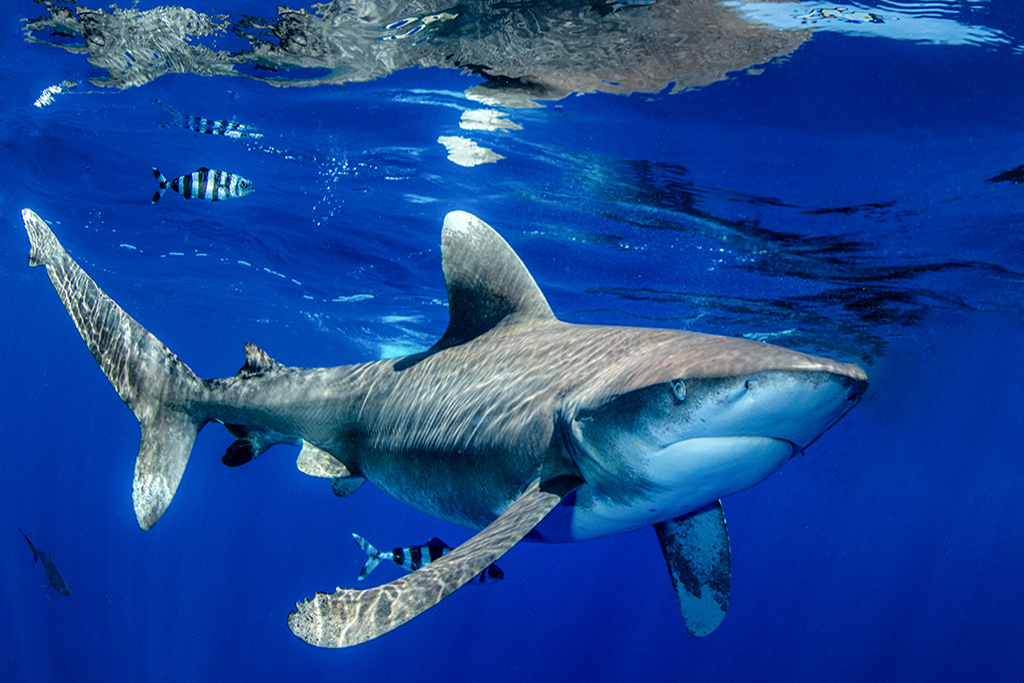
Oceanic whitetip sharks grow up to 4 meters and are “Critically Endangered” in the Northwest and Western Central Atlantic areas – Cat Island – Bahamas – Jett Britnell
NRB: What image are you most proud of and why?
JB: I never fall in love with the images I make. Not unlike searching for the lost chord in music, I’m seemingly always more interested in the next photo I’ve yet to make. That being said, if I had to choose just one photo at the moment it would be an image, I made of an Oceanic Whitetip Shark while snorkeling with Epic Diving (www.epicdiving.com) approximately seven miles offshore at Cat Island, in the Bahamas. It’s an image I held in my mind’s eye after watching the shark documentary “Blue Water, White Death” when I was still a pre-teen.
NRB: Where is your favourite dive location, and is it your favourite for the photography?
JB: I absolutely love diving just about anywhere on this magnificent blue planet. If you were to ask, “If you could only dive in one place for the rest of your life, where would that be?” it would hands down be in British Columbia’s famed Browning Passage, which is situated off the north end of Vancouver Island. I’ve made it known this is where I want my cremated remains scattered after my soul departs on its next great adventure.
NRB: What are you views on marine life manipulation, moving subjects?
JB: I‘m opposed to marine life manipulation insofar as moving say a nudibranch next to some more colourfully background, or anything like that. Some believe that shark dives where bait is used to attract them into the area is manipulating the shark’s behaviour. I disagree as there have been several studies which support that sharks are merely being opportunistic feeders. I have witnessed underwater photographers move something, and then not put it back. No picture is worth harming or disturbing marine life.
NRB: What do you look for when you are making your images?
JB: First, if I’m shooting wide angle, I always use “jump settings.” In other words, my camera settings are already dialed in for any subject I might encounter after splashing beneath the waves. Down below, I think about composition and photogenic backgrounds. I take my time to look for photo ops. Patience is a virtue as I will wait a considerable amount of time for a critter to move into the right place. Ideally, we are at a dive site inhabited by marine life we are hoping to photograph. If not, it doesn’t matter. I always descend beneath the waves with a mindset that something good will always happen. Some underwater photographers stress themselves out, along with whomever they may be diving with. In order to truly excel at the art of underwater photography on should attach themselves to having a Zen-like attitude as easily as they change a camera lens.
NRB: What motivates you to take u/w photos?
JB: I never needed any motivation. I could not have known when I was five years old what I know now and that is I was shaping my destiny when I strapped on an old war surplus gas mask and dunked my head into a big black iron cauldron to look at goldfish. I have a lifelong love for the oceans, rivers and lakes and all that lurks beneath the surface.
NRB: If you could photograph any one thing/place what or where would that be?
JB: There is no one place for me. I would love to photograph marine life in the Arctic and Antarctica, Orcas in Norway, or diving with sharks and whales just about anywhere; exploring ancient shipwrecks in the Greek Isles, and the Philippines presently looms large on our horizon. We have been there twice before and Kathryn and I have been invited to lead a trip there in 2022. It’s a lovely country brimming with kind-hearted, beautiful, people and diving there never ceases to amaze.
To see more of Jett’s work follow these links:
- Website: www.jettbritnell.com
- Website: thirdageexpeditions.com
- Facebook: https://www.facebook.com/jett.britnell
- Instagram: https://www.instagram.com/jett_britnell
- Twitter: https://twitter.com/jettbritnell
Blogs
TRAVEL BLOG: Jeff Goodman Dives SOMABAY, Part 2

Day three of my trip to Somabay and we were spending the day on the Lady Christina and diving on the wreck of the Salem Express.
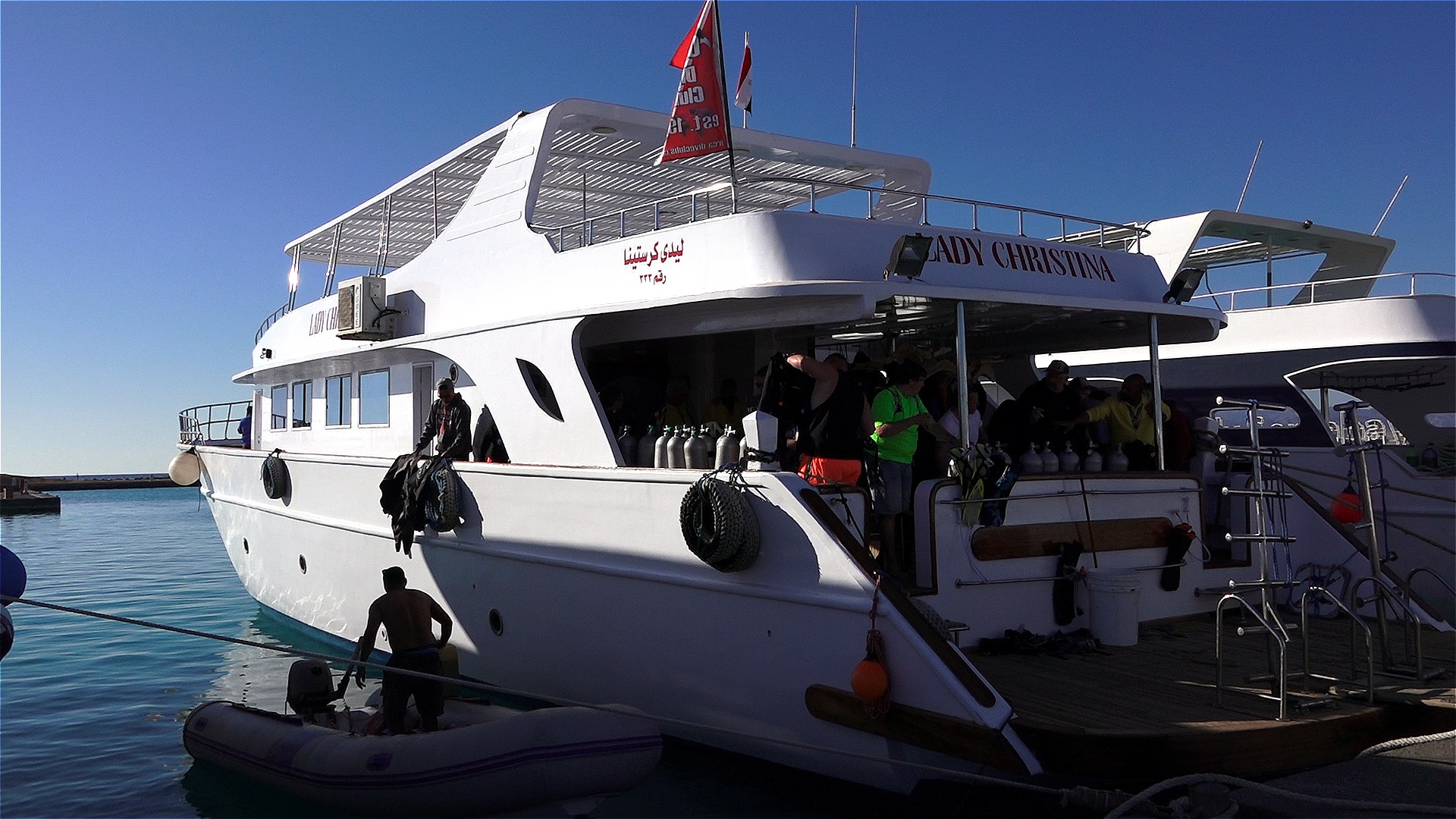
Diving wrecks for me is always one of mixed emotions. The excitement of diving a wreck is more than often tempered by the thought of loss of life when she sank. The Salem Express was a passenger ship and a roll-on/roll-off ferry travelling from Jeddah, Saudi Arabia to Safaga, Egypt. Most passengers were of poor class travelling home from their holidays while around 150 people were returning home from their pilgrimage to Mecca.

The ship struck a reef and sank within 20 minutes. Passengers were trapped below deck and the ship was filled with fear and panic.

The wreck area is strewn with personal belongings from the crew and passengers such as a transistor radio and a flat iron for clothes. A diver at sometime has put them in a prominent place to be seen.

Tragically only one life boat was launched while the others went down with the ship. More than 600 men, women and children lost their lives here.

It’s a stark reminder that the sea can be unforgiving and so when we dive on such wrecks we should do so with humble regard.
Returning to the surface, shoals of fish are gathered under our boat and seem to be welcoming us back into the light.
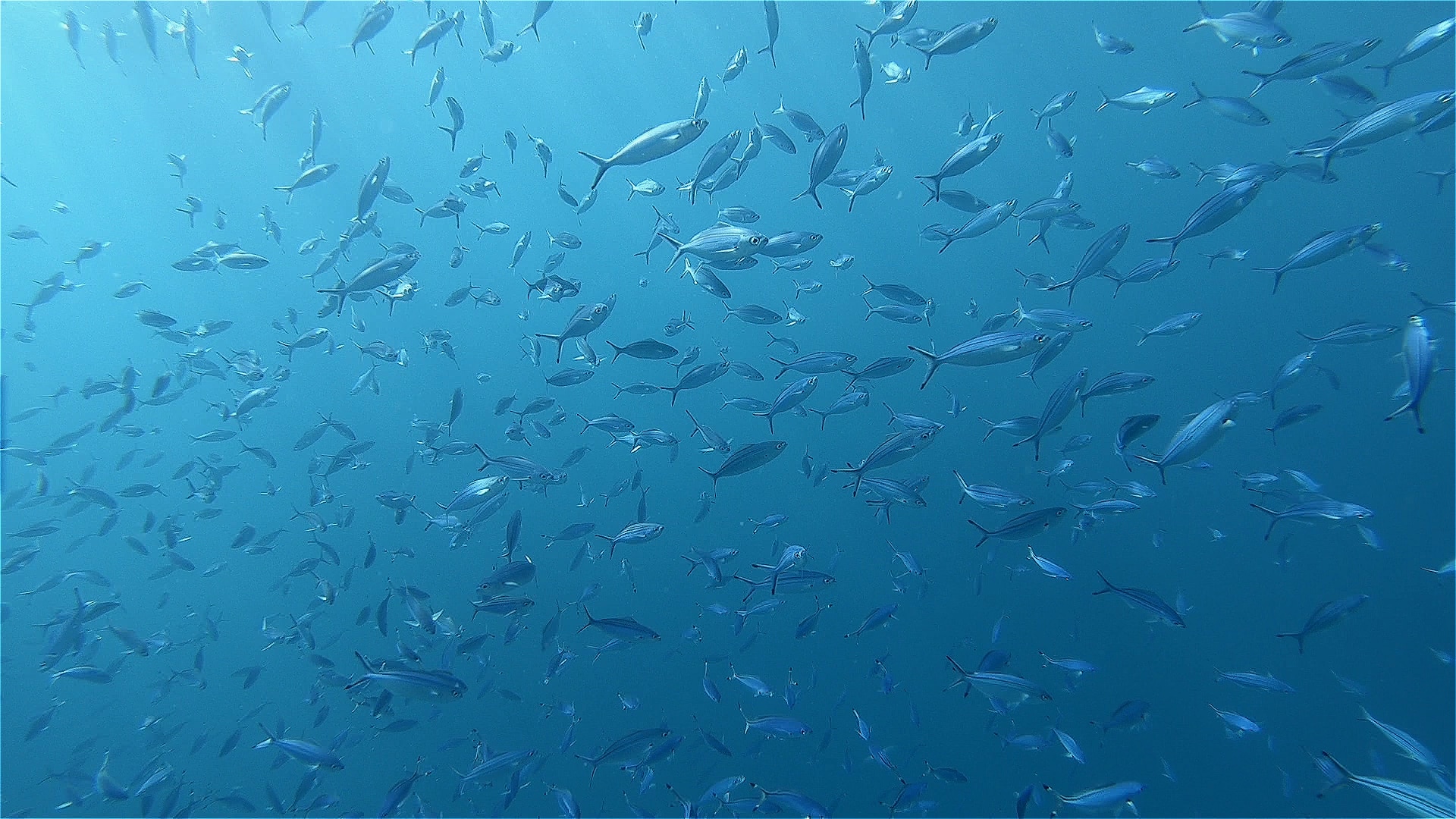
Back at the Breakers I sat in the dining area with a beer and a very good meal while my thoughts still remained with the day’s dive on the Salem Express.
Check in for part 3 tomorrow for Jeff’s last day of diving with Somabay on the off-shore reefs looking for turtles.
Book your next Red Sea dive adventure with SOMABAY! For more information, visit www.somabay.com.
Stay at the Breakers Diving & Surfing Lodge when you visit! For more information, visit www.thebreakers-somabay.com.
Find out more about ORCA Dive Clubs at SOMABAY at www.orca-diveclubs.com/en/soma-bay-en.
Blogs
TRAVEL BLOG: Jeff Goodman Dives SOMABAY, Part 1

For a week at the end of February I was invited to sample the diving with Orca Dive Club based at the Breakers Diving and Surfing Lodge by courtesy of SOMABAY.
Somabay covers an entire peninsula and is home to several resorts as well as residential compounds. Somabay caters for scuba diving as well as many other sports, including windsurfing, golf, sailing, go-carting, horse riding and many other activities.
All the activities are of a world-class standard and any or all of these can be booked directly from The Breakers.
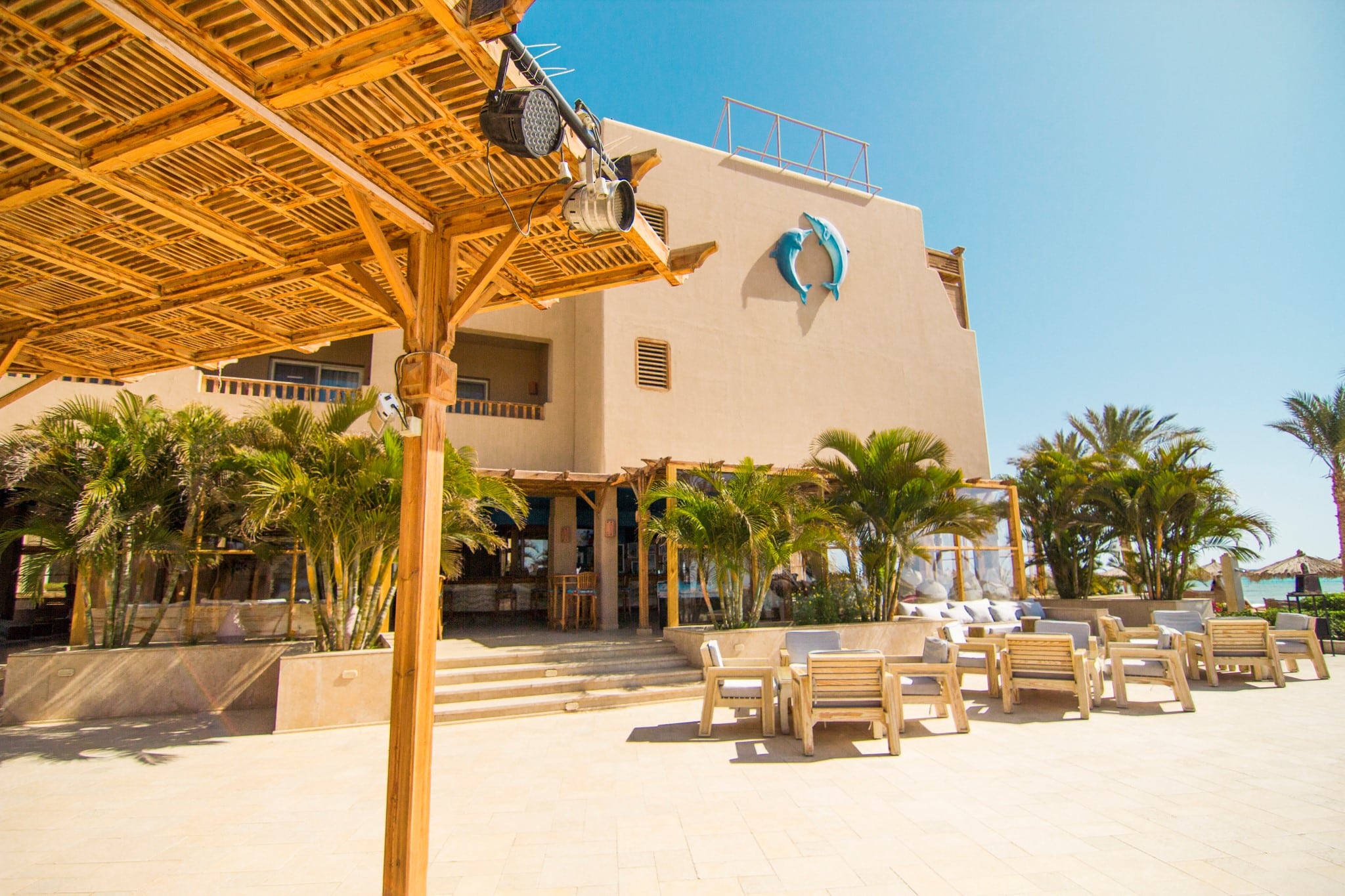
I took Easyjet from Bristol (UK) to Hurghada. Easyjet are not by any means my favourite airline but the flight was cheap and direct (except for the surprise extra £48 I was charged at the gate for my carry-on bag).
I was met at Hurghada airport by a driver and car and taken to the Breakers 28 miles (45Kilomaters) south along the coast. Once at the hotel I was too late for an evening meal and so a basic meal was delivered to my room. That and a beer from the fridge and I was fast asleep.
Early the next morning after breakfast I arrived for my rep meeting at the Orca Dive Center for 8.00am. I was immediately made to feel welcome, and after brief introductions I got some dive gear from the store, had a chat with my dive guide Mohamed and got ready to try the house reef situated at the end of a very long wooded pier where all diving gear and divers are taken out by buggies.
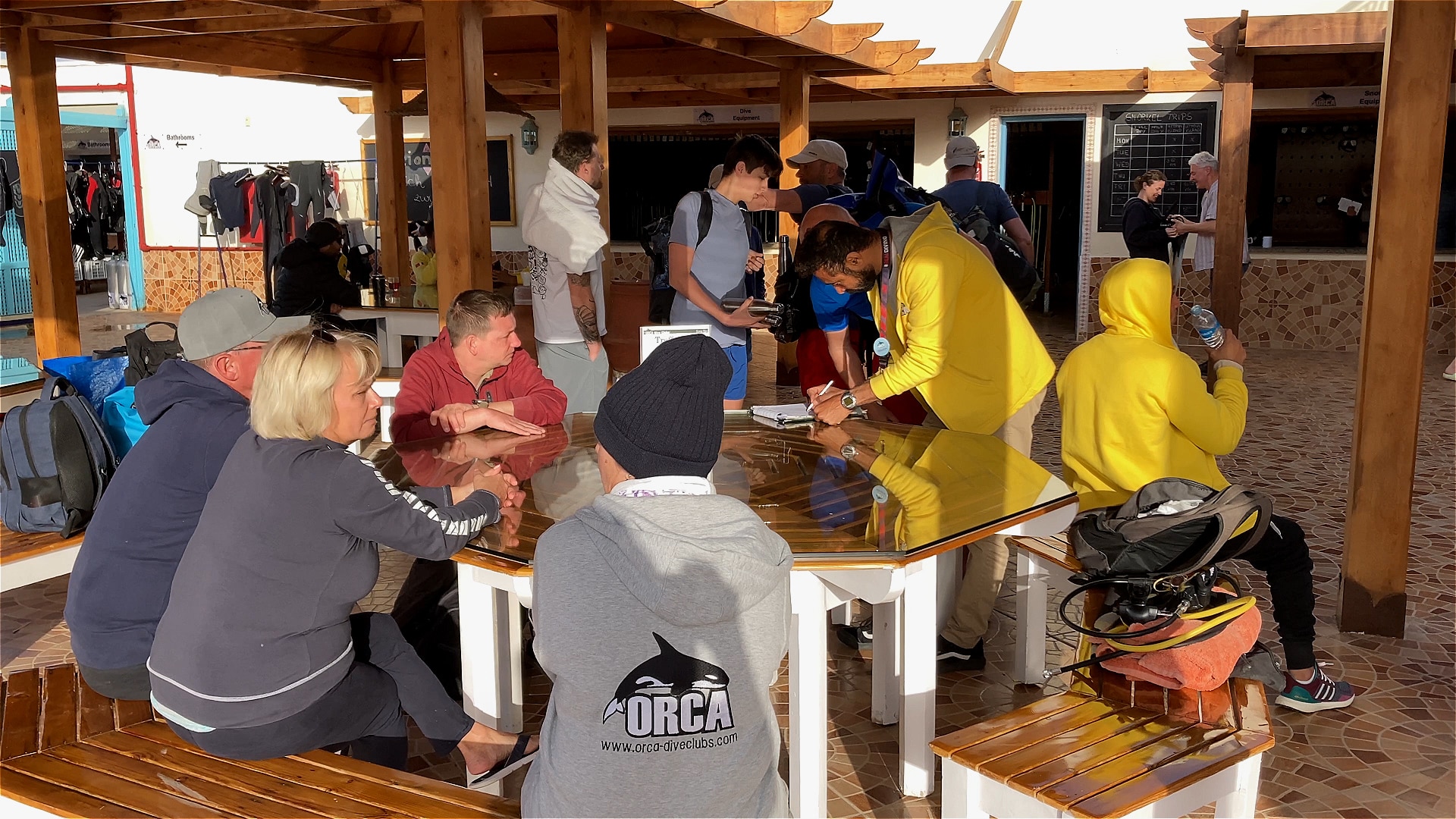
Once at the end of the pier, a helping hand from staff makes sure your gear is set and then it’s a short walk to the very end where you can either climb down a ladder of simply jump in the water next to the reef. The house reef extends both north and south giving a very easy and safe dive with plenty to see. At this time of the year the water temperature was a constant 22 degrees Centigrade and there was little or no current, so there were no issues in swimming back to the pier.
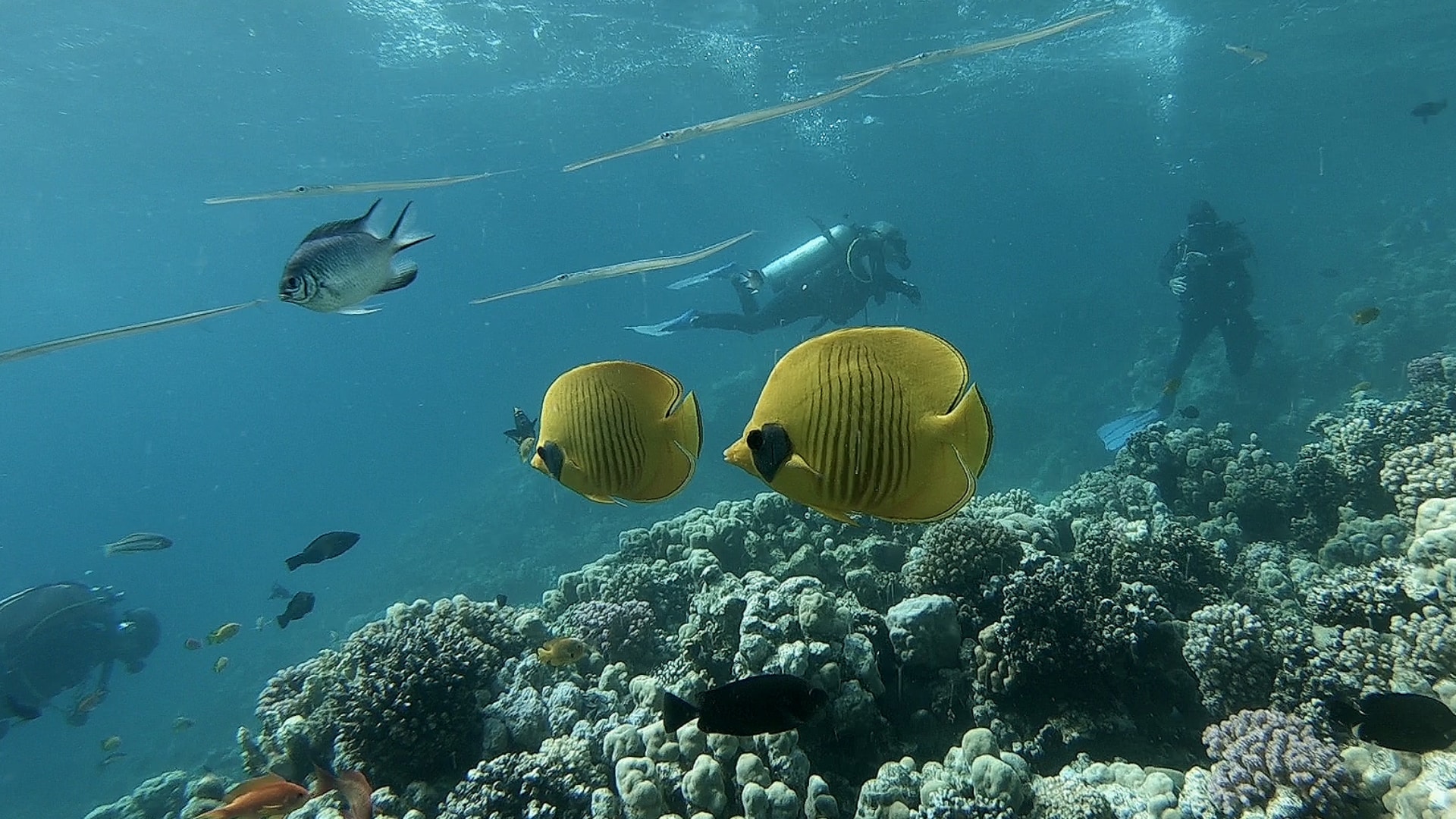
Quite a few divers were in dry or semi-dry suits, but being from the UK and used to the cold I found a 3mm wetsuit with a 3mm neoprene vest quite comfortable. Even after 50 years of diving I still find that first dive of a trip slightly nerving until I am actually underwater and then all becomes relaxed and I ease into auto diving mode. There was plenty to see with many of the Red Sea favourites along the way.
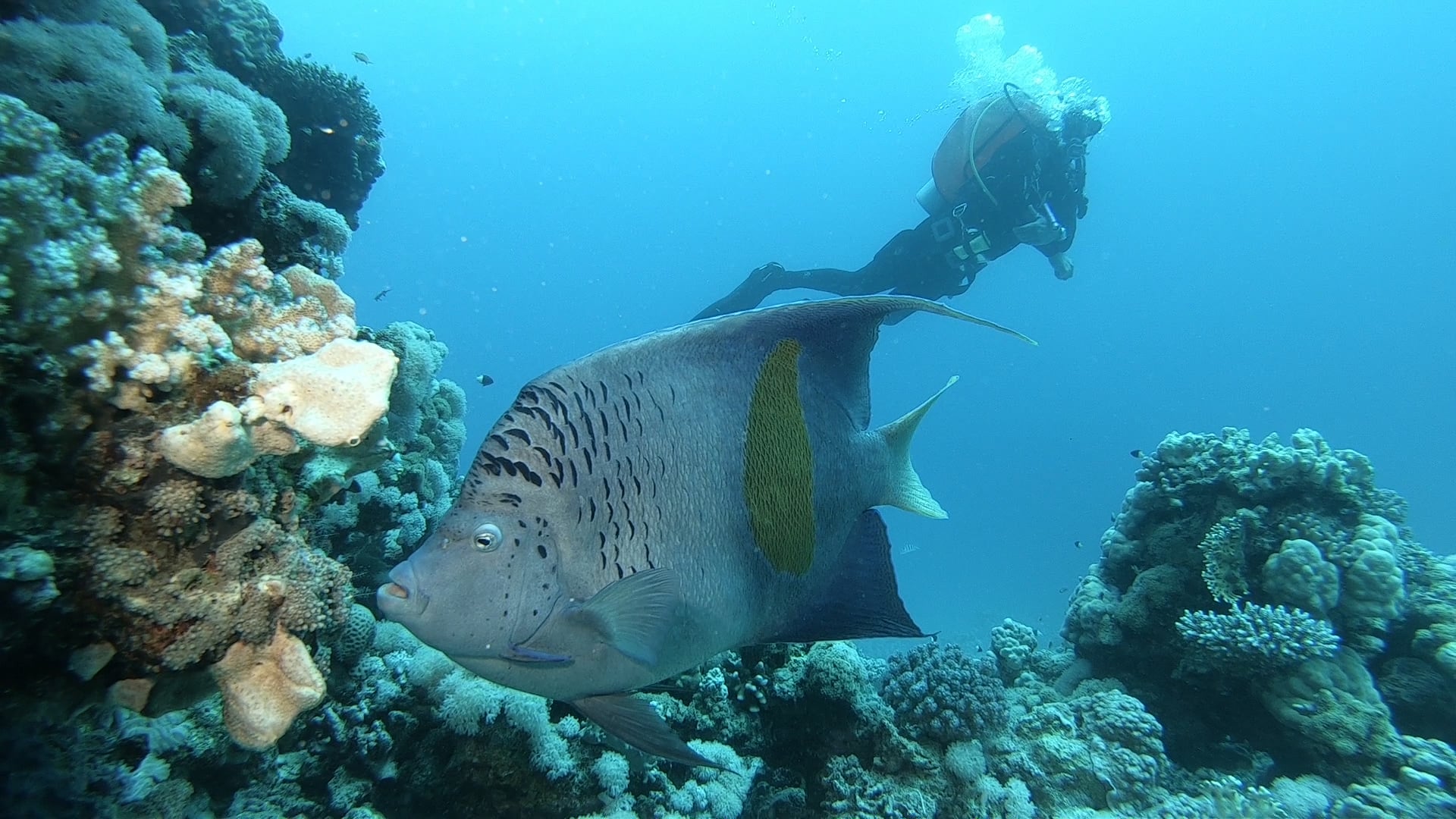
After the dive and a buggy ride back to the hotel for a very good buffet lunch I was back in the water, once again on the house reef for an afternoon dive.
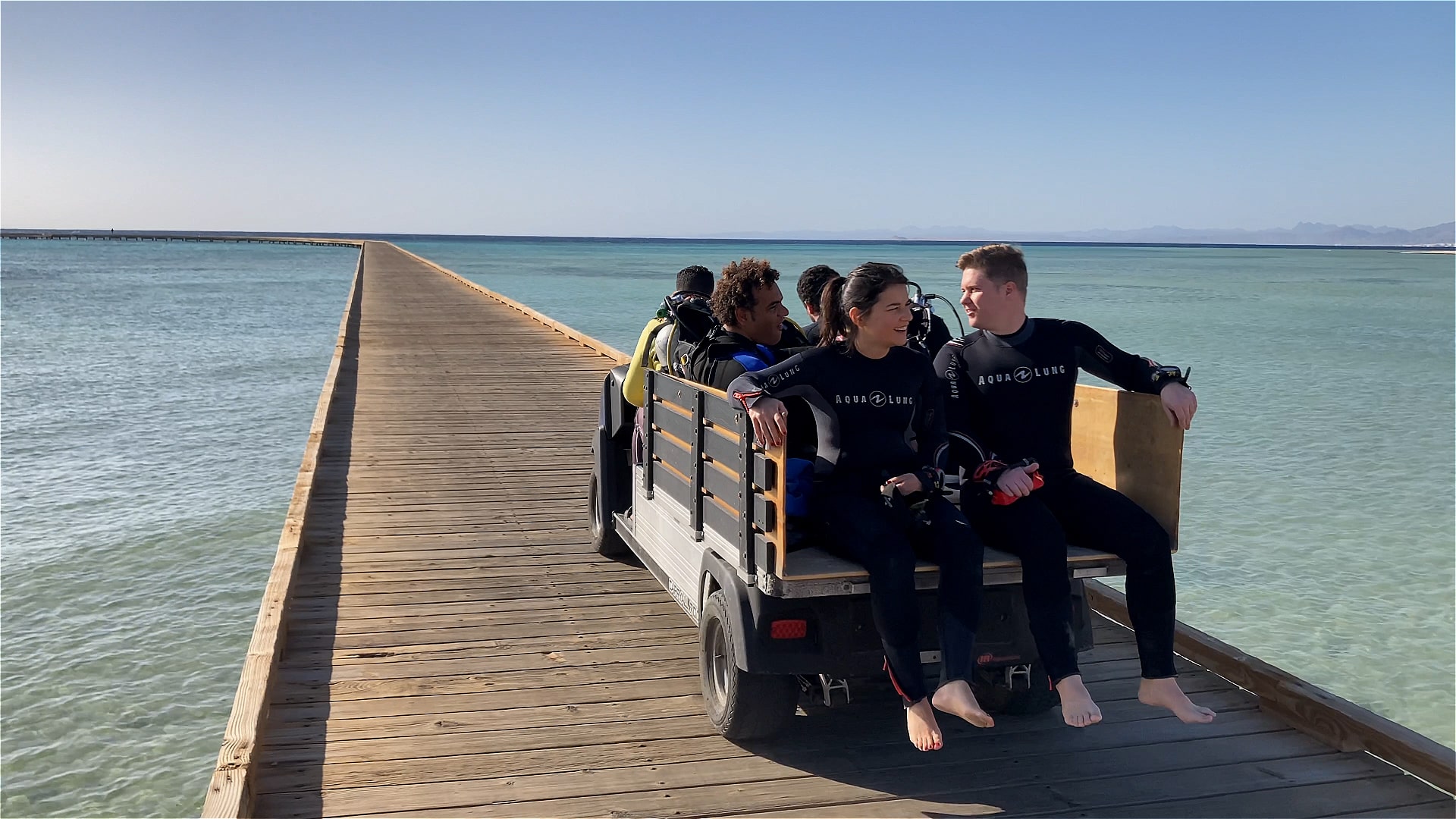
Check in for part 2 tomorrow when Jeff gets on a day boat and dives a few of the off-shore reefs.
Book your next Red Sea dive adventure with SOMABAY! For more information, visit www.somabay.com.
Stay at the Breakers Diving & Surfing Lodge when you visit! For more information, visit www.thebreakers-somabay.com.
Find out more about ORCA Dive Clubs at SOMABAY at www.orca-diveclubs.com/en/soma-bay-en.
-

 News3 months ago
News3 months agoHone your underwater photography skills with Alphamarine Photography at Red Sea Diving Safari in March
-

 News2 months ago
News2 months agoCapturing Critters in Lembeh Underwater Photography Workshop 2024: Event Roundup
-

 Marine Life & Conservation Blogs2 months ago
Marine Life & Conservation Blogs2 months agoCreature Feature: Swell Sharks
-

 Blogs1 month ago
Blogs1 month agoMurex Resorts: Passport to Paradise!
-

 Gear News3 months ago
Gear News3 months agoBare X-Mission Drysuit: Ideal for Both Technical and Recreational Divers
-

 Blogs2 months ago
Blogs2 months agoDiver Discovering Whale Skeletons Beneath Ice Judged World’s Best Underwater Photograph
-

 Gear Reviews2 months ago
Gear Reviews2 months agoGear Review: Oceanic+ Dive Housing for iPhone
-
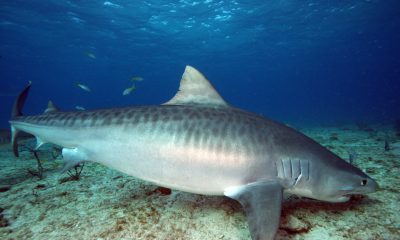
 Blogs3 months ago
Blogs3 months agoThe Thrilling Encounter with Tiger Sharks at Beqa Lagoon’s ‘The Colosseum’ with Coral Coast Divers


